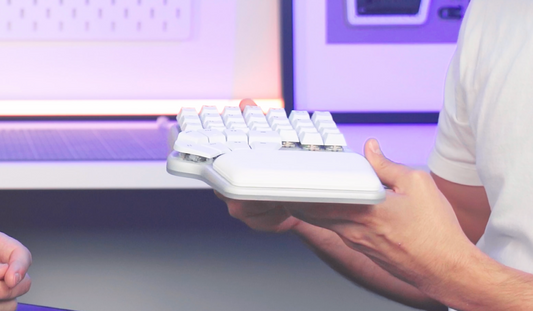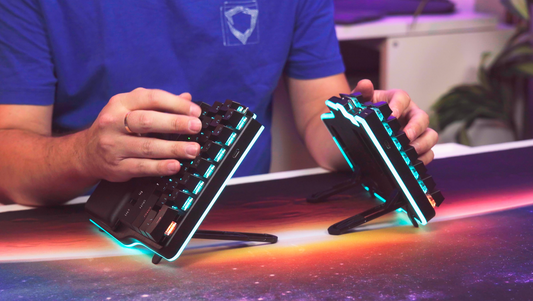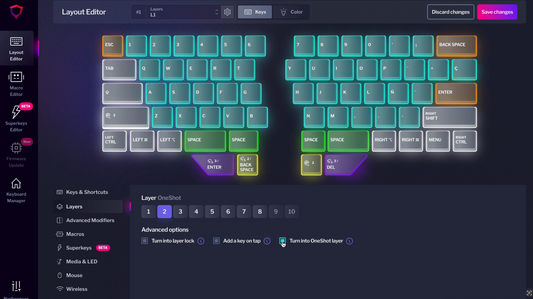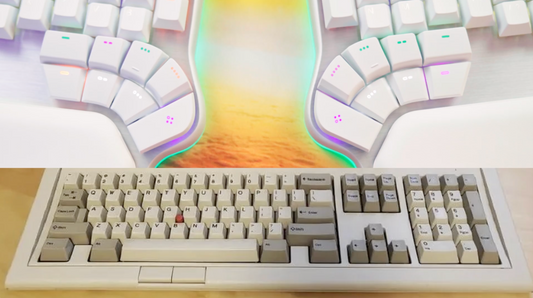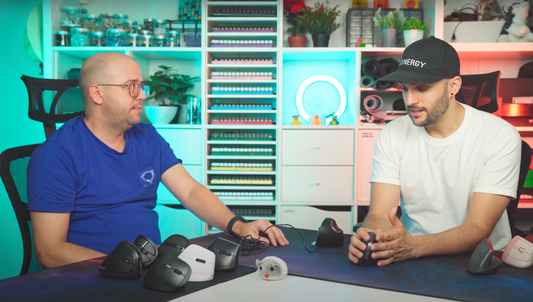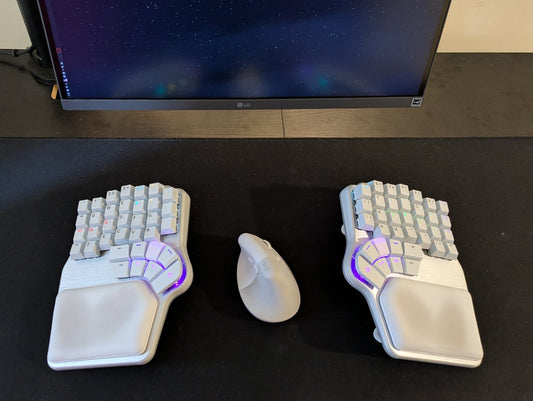I couldn’t wait for this moment to come! After months of hard work and all kinds of challenges along the way, the Wireless Dygma Defy is ready for the CE RED & FCC ID Certification tests 🧪🎉

So, what does that mean, exactly?
Well, it means that the wireless version of the Dygma Defy can send keystrokes to the computer through all three channels (wired, RF, and Bluetooth), and the battery charges and provides the necessary energy for the keyboard to work and the LEDs to light up.
So much work for just one paragraph 😅

Of course, there’s still a lot more to be done –for example, we have to make the firmware work with all the programmable features— but this milestone was critical: once we pass the certification, we can begin manufacturing 🏭
But let’s not get ahead of ourselves, and let me tell you a few stories of the many things our brave firmware and electronics engineers had to face to get here.

As you know from the previous updates, we’ve suffered from the chip crisis, the complexity of the firmware itself, and China’s zero Covid Strategy. And all that has still been affecting us.
The battery is charging. Or is it?🪫
As mentioned, the keyboard needs a working battery to be tested.

Each side of the Dygma Defy has a 2370 mAh battery attached to the RF PCB, where a specific chip is responsible for charging and controlling it. If you want the exact details, it’s a USB-Compliant Single-Cell Li-Ion Switching Charger with USB-OTG Boost.
We prepared our firmware to work with that chip, put the batteries to charge overnight, and turned the keyboard on to confirm they were working. And they were, but they would only last about 30 minutes!!! 😱

How was that even possible??!? I mean, we have a lot of LEDs, but those are smartphone-size batteries. Was something drawing too much power? Were the batteries faulty? Was it the firmware?
We tried different batteries and checked how much current was being drawn, and everything seemed alright, so it had to be something related to the firmware 👩💻
At first, we thought it was misreading the charge of the battery, but after a bit of testing, we realized that the problem was that the chip just stopped charging the battery after 15 minutes.

Phew, that was a relief. We made some changes to the firmware, and voilà, the battery is now charging fully 🔋
We still have to tweak some things –it does not charge as fast as we want, and it doesn’t provide the exact Voltage to the keyboard, so it’s not as efficient– but it’s good enough for testing.
COVID and quarantined packages 😷
Yes. You’ve read correctly. Packages can be quarantined in 2022. For 14 days, nonetheless! And we had a critical one quarantined.
The thing is that the certification lab needs some data from the antenna components that we have on the sides of the keyboard and the Neuron.

However, because we hate doing things the easy way, we use custom components, so we need to do some measurements to gather the antenna pattern and gain 📶
We had sent that component beforehand to the test lab so they could obtain those parameters. However, Shenzhen had a severe COVID outbreak earlier this month, and the lab was understaffed, so they sent the PCBs to another lab in another region.
Of course, while it was on its way, a shipping logistics center had to close due to COVID, meaning that all the packages inside must be quarantined for two weeks. And our PCBs are among those packages 🤦♀️
We are trying to get another set ready to be sent to the Shenzhen lab as soon as possible, but it will take some time. Fortunately, most parts of the certification tests can be carried out without that data from the antenna, so we don’t expect significant delays 🙌
So, what’s next?
The next milestone will be passing the certification test, which is expected to take between three weeks and a month. It’s our first time certifying a wireless keyboard, but we’re confident to come on top. Plus, we’ve taken some preventive measures.
For example, we have included a bootloader mode in the Neuron and the RF CPUs, so the lab can quickly flash the firmware if needed. In fact, it can be done with a smartphone.
Preparing the bootloader has been very complex and a big time sink, but that way, if there’s a problem with the firmware during testing, we can fix it and send it to the lab, and they can flash it on the spot. No need to send packages that might get quarantined 📦

Nevertheless, we want to be transparent about the possible outcomes of the certification 🔬
- The worst-case scenario is that the body of the keyboard interferes with the connection, and we have to make changes to the mechanical design, which has already gone through endless iterations to be ready for manufacturing. We don’t expect it to happen, as we designed the keyboard having this in mind, but wireless connectivity can be tricky.
- The not-so-bad scenario is that we need to change the electronics (like swapping a component, doing some re-routing, etc.) to pass the test. That would mean redesigning the PCBs and sending them back to the lab.
- The quite-good scenario is that we need to make adjustments to the firmware. This scenario is what we planned for and why we included the bootloader mode. It’ll help make changes and test much faster.
- The best-case scenario is that everything works the first time or only needs minor changes.
Regarding timelines, we sent the keyboard to testing three weeks later than planned. Nevertheless, we’ve made excellent progress both on the firmware and electronics, so we are much more confident about being in the best scenarios 💪
Anyhow, our timeframe depends a lot on how this certification pans out, so we’ll update you as soon as we have news.
The most important takeaway is that as soon as the CE RED & FCC ID certification is ok, we’ll start manufacturing ⚙️
As always, thanks for supporting the Dygma Defy; it means the world to us to share this journey with you.
谢谢你们 🇨🇳

